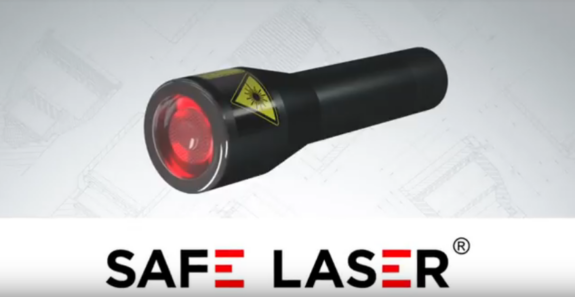Recommended Advice To Selecting A Safe Laser Treatment
Recommended Advice To Selecting A Safe Laser Treatment
Blog Article
What Is Low-Level Safe Laser Therapy (Lllt) Help With Locomotor Pain And Sports Injuries?
Low-level laser therapy (LLLT), can help reduce injuries to the sports and locomotor muscles by several mechanisms. This can relieve the pain and inflammation that comes with injuries.
Accelerated Tissue Recovery- LLLT stimulates cell growth and metabolism to speed up tissue regeneration. It stimulates collagen production, which is important in the healing of injured ligaments, tendons, and muscles.
Pain relief- LLLT affects the perception of pain through controlling nerve conductivity as well as reducing pain mediators, such as substance P. In addition, it stimulates the release endorphins. These are substances naturally produced by the human body that help to reduce the sensation of pain.
Improved Circulation LLLT improves vasodilation, microcirculation and blood flow in the injured area. Improved blood circulation blood circulation allows nutrients and oxygen to get to the tissues. This aids in healing and decreases recovery time.
Muscle Relaxation LLLT can help relieve tension and muscle spasms by encouraging the release of nitric oxide which causes smooth muscle relaxation. This is especially helpful for athletes who experience muscle stiffness.
Preventing Scar Tissue formation - by promoting tissue regeneration, LLLT helps minimize the scar tissue formation. This may limit mobility and result in chronic pain if not treated properly.
Increased Range Of Motion LLLT reduces pain and inflammation to improve joint flexibility, making it possible for people to return to normal activities.
Safe Laser low-level therapy is a non-invasive and drug-free approach to managing injuries from sports and locomotion. This helps speed up recovery and better outcomes for those looking for relief from pain in the musculoskeletal system. Check out the top safe laser 500 ár for website examples including gyógyító lézer, safe laser kezelés budapest, gyógyító lézer készülékek, laser lézer, lágylézeres készülék, lezer kezeles, laser lézer, lágy lézer, lágylézer kezelés budapest, lágylézer vásárlás and more.
What Is Low-Level, Safe Laser Therapy (Lllt), Treat Ear Problems?
Low-level laser therapy that is safe (LLLT) can assist with many ear-related issues by using a variety of mechanisms- Reduction of Inflammation- LLLT has anti-inflammatory effects that can reduce inflammation within the ear canal or middle ear. For conditions such as the otitis externa (inflammation of the outer ear canal) or otitis media (middle ear infection), LLLT can help alleviate inflammation and associated symptoms like pain and swelling.
LLLT provides relief from discomfort in the ear.
Enhanced tissue healing- LLLT enhances the cellular metabolism which leads to accelerated healing and repair of tissues. For conditions like otitis media or eardrum perforations, LLLT can help promote quicker healing of damaged tissues, thus reducing the chance of complications and improving overall health of the ear.
Improved Circulation LLLT increases microcirculation and vasodilation which results in an increase in blood flow in the ear tissue. Increased blood flow is able to deliver oxygen and nutrients directly to inflamed tissues and injured tissue, which promotes healing and decreases inflammation.
Tinnitus Management LLLT is being studied as a potential treatment option for Tinnitus. Tinnitus is characterized by buzzing and ringing within the ear. While it's not known the mechanism by which LLLT performs but it has been demonstrated to increase blood flow, decrease inflammation, and ease tinnitus.
Reduction of Earwax Buildup- LLLT may help soften and break down earwax (cerumen) accumulation in the ear canal, facilitating its removal and reducing the risk of ear blockage or infection. This is especially beneficial to those who are prone to excessive earwax production or those experiencing earwax impaction.
Overall, Safe Laser low-level laser therapy provides an uninvasive and drug-free solution to managing various ear problems and provides relief from the signs like pain, inflammation, and earwax buildup. Consult an ENT (ear, nose and throat) specialist to get an accurate diagnosis of the condition and to get recommendations for treatment. Read the most popular safe laser 500 ár for blog examples including gyógyító lézer készülékek, laser hu, lágylézer kezelés árak, lezer kezeles, lágylézer árak, lágy lézer vélemények, safe laser használata, lézer kezelés hatása, lágylézeres készülék, laser kezelés and more. 
How Long Does It Take For A Safe Laser Device To Work On Acute Conditions?
Safe Laser can be used to treat acute conditions. The number of sessions required to get results depends on factors like the severity of the condition and how the patient reacts to treatment and also the treatment plan that a physician recommends. LLLT can provide rapid relief in the case of acute conditions. This could include recent injuries or inflammations, as well as acute pain events. In some instances, individuals may experience relief from pain, decreased inflammation and swelling after a few LLLT treatments. To achieve long-lasting and sustained results, it's usually advised to undergo several LLLT sessions.
The precise number and frequency of LLLT sessions needed to treat acute illnesses can differ depending on the problem being addressed as well as the severity of symptoms, as well as individual aspects like overall health and response to treatment. Healthcare professionals tailor treatment protocols to suit the specific needs of every patient. This may be as simple as scheduling LLLT sessions several times a week for a specific duration.
It's essential to follow the treatment plan prescribed by a physician and be present at all scheduled LLLT sessions to reap the maximum benefits of therapy for acute conditions. Additionally, individuals may notice improvements over time as they continue treatment over time. It is important to discuss any concerns you may have with your physician regarding the progress of treatment or treatment plan.